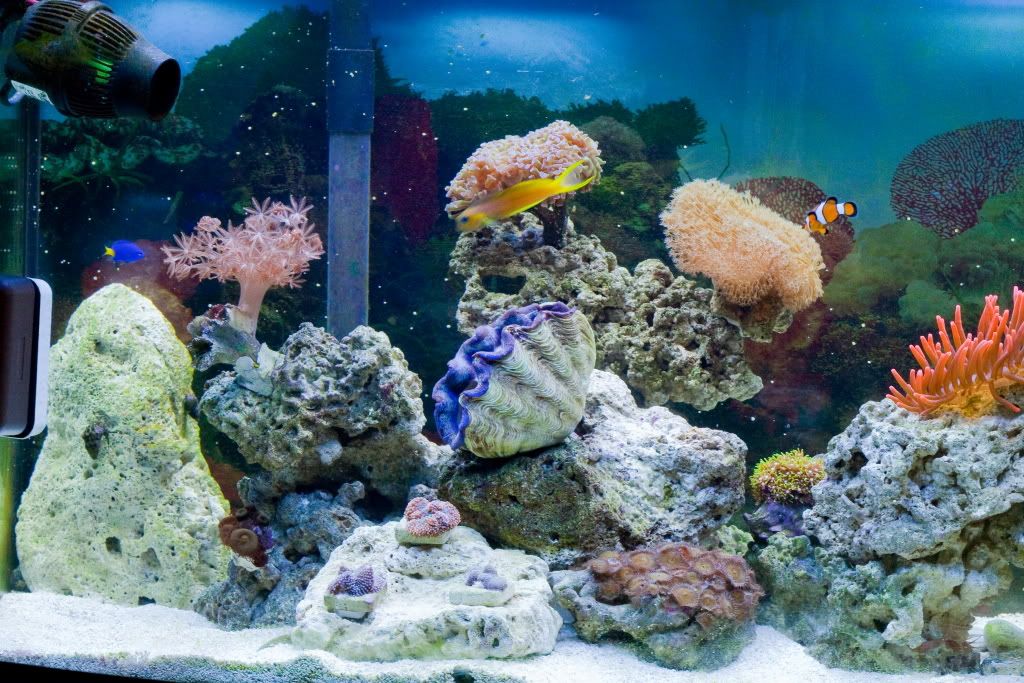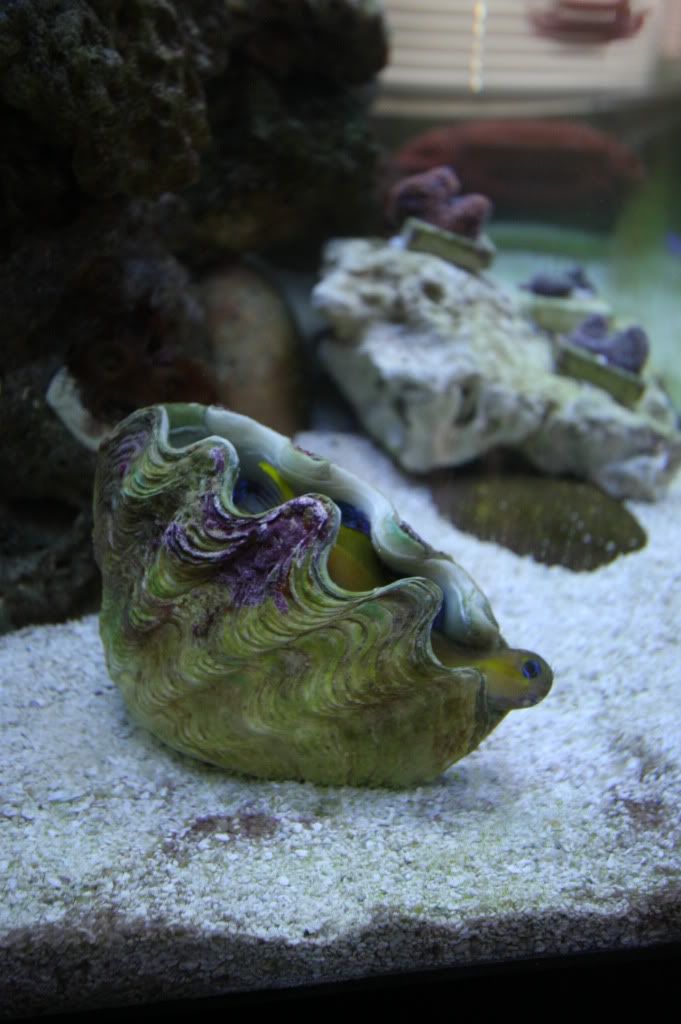The mantle of the Crocea Clam, also called the Boring Clam, or Crocus Clam, is a mixture of colors including blue, purple, and shades of browns and yellows. It may have iridescent patterns of blues, yellows, and greens. The Crocea Clam has a thick shell with fine file-like ridges on the lower portion and rows of thin scales near the upper rim. It penetrates through limestone substrates by releasing an acid to break down the carbonate in the stone. It uses the ridges of its thick shell to dig into the rock by opening and closing quickly through the use of its byssal muscles. It is the smallest of the "giant" clams (maximum 6 inches), so this burrowing behavior helps to protect it from predators such as starfish and butterflyfish. It has small tentacles on its incurrent siphon and a wide byssal opening. In the wild, the Crocea Clams often live together in great congregations. Both wild and cultured Crocea Clams are found in the aquarium industry.
In the home aquarium, the Crocea Clam is delicate compared to other Tridacna clams and is highly dependent on light. It requires bright lighting supplied by metal halide lamps to live, grow, and keep its intense colors. The type of lamp will depend on the depth of the tank and the position of the clam. A daylight fluorescent tube is also recommended. The Crocea Clam requires calcium levels of 400-480 mg/L, and a carbon hardness of 7 to 12 degrees. Proper levels of strontium and iodine are also needed. The subtrate should provide multiple areas into which the clam can burrow.
The Crocea Clam relies heavily on the photosynthesis of the algae growing in its mantle. However, it should be fed daily with a yeast-based suspension unless the tank is populated with fish and corals which are fed regularly. It also requires nitrogen for proper growth, and if the nitrate level is too low, additional nitrate should be added, but the level should not be higher than 2 mg/L.
I still think it looks ok....LOL










